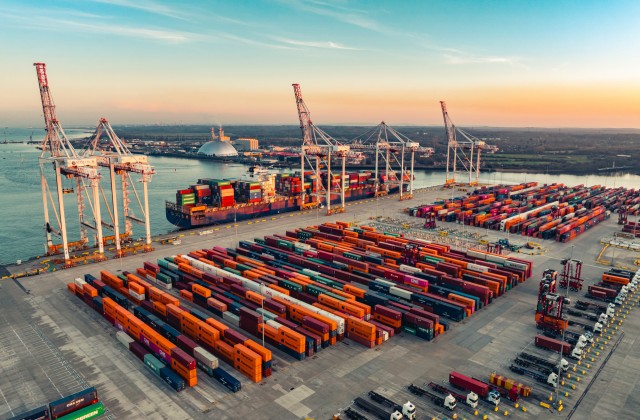The conventional assumption that tariffs are geopolitical risks is becoming outdated. Legal volatility—triggered by domestic court rulings—is the new wildcard. A recent federal court challenge to the executive branch's emergency tariff authority in the U.S. has demonstrated how lawsuits could reshape trade dispute resolution, creating a new paradigm where the legal system, rather than the legislature, has a deciding role in dictating trade flows.
Now, the conversation is shifting from “What tariffs are coming next?” to “Can we trust any trade rule will hold?” The resulting strategic question for companies is: How do we build resilient supply chains when even the rule-makers are unstable? Every major industry now faces a unique supply chain challenge.
Automotive: Can JIT manufacturing survive legal disruptions to tariff policy?
Automakers must model dual-path sourcing strategies and reintroduce buffer inventory—not just for parts, but for regulatory flexibility. Tariff uncertainty may prompt manufacturers to increase safety stock levels or pre-purchase materials, squeezing working capital. Increased costs for critical imports—especially steel, aluminum, and electronic components—could further affect vehicle production and margins. To minimize risks, AI can simulate the impact of multiple legal outcomes and adjust supply flows in real time. As a next step, automotive companies should expand legal-scenario-based control towers and embed tariff-triggered workflows across the tier-1 to tier-3 supplier network.
Luiz Solia, Vice President, Industry Principal
Chemicals: Can supply chains continue to deliver maximum scale while preserving margins?
Chemicals companies will need to be prepared to respond to a variety of scenarios, including taking advantage of tariff-induced price arbitrage opportunities between regions, stockpiling supplementary buffer inventory of key feedstocks in tariff-targeted regions, or making tactical commodity trades that support, rather than undermine, the wider supply chain network. To do that, they need to adopt supply chain infrastructure that allows for the extraction and consolidation of time-sensitive, mission-critical chain data, so that decision makers can evaluate the status quo and reassess course instantly.
Alexandre Sicard, Business Consultant
Consumer electronics: Is nearshoring a durable fix or a bet on temporary legal breathing room?
Companies relocating to Mexico may face rapid reversal in cost advantage if emergency tariffs are struck down. This is especially risky for firms betting on partial assembly models. Instead of over rotating on nearshoring, consumer electronics companies should model multi-jurisdictional manufacturing cells, facilities that can toggle between regional inputs based on tariff state. By leveraging digital twins, they can simulate instant reconfiguration.
Alex Rotenberg, VP, Industry Prinicipal
Medical devices: Can companies limit the risk of shortages without triggering additional regulatory scrutiny?
Emergency tariffs have raised the landed cost of essential imports in medtech, forcing procurement teams to seek alternative (and often less validated) suppliers, which is a regulatory risk. But failing to seek alternatives is also risky. Delayed product launches or drug shortages can entangle companies in regulatory and political pressure, especially for high-profile treatments or diagnostics. As a strategic response to tariff volatility and legal unpredictability, medtech companies are accelerating efforts to localize production in the U.S., requalify suppliers across multiple geographies, and dual-source APIs and components to mitigate risk from any one trade partner. To balance short-term and long-term efforts, companies should turn to AI for continuous risk-cost trade-off optimization.
Kourosh Samini, Director, Industry Principal
Pharma: What happens if court rulings force a rollback of tariff protections on critical ingredients?
Many Western pharmaceutical companies rely on India and China for APIs. If emergency tariffs are reinstated after a favorable court ruling is overturned, production costs will spike and inputs could dry up. To stay ahead of any potential rollbacks, pharmaceutical companies should build redundant dual-sourcing frameworks, including in “tariff-insensitive” regions. Like their peers in medtech, pharmaceutical companies should also turn to AI for continuous risk-cost trade-off optimization.
Kourosh Samini, Director, Industry Principal
Retail & apparel: How will legal tariff uncertainty affect seasonality and promotions?
Fast fashion, in particular, operates on tight margins and short cycles. Legal tariff swings could disrupt entire seasonal plans or squeeze margins mid-cycle. These companies will have to introduce “legal weather modeling” into merchandise planning systems. They should also adopt rolling sourcing contracts with dynamic pricing clauses based on tariff exposure.
Alex Rotenberg, VP, Industry Prinicipal
Semiconductors: If emergency tariffs are invalidated, does the US lose leverage in chip self-sufficiency?
Many fabs depend on protectionist policies for viability. If the court invalidates emergency tariffs, it undermines the CHIPS Act’s protective shield. Semiconductor companies should build strategic inventory buffers and reforecast domestic manufacturing ROI based on worst-case legal reversals.
Alex Rotenberg, VP, Industry Prinicipal
Strategic measures across industries
Regardless of the industry, legal challenges inject uncertainty that complicates market access, sourcing strategies, and regulatory compliance. Supply chain and logistics leaders will need to embrace new processes to prepare for short- and long-term impacts of evolving legal challenges.
- Embed legal scenarios in supply chain models
Don’t just simulate demand shifts or cost increases—simulate regulatory reversals. Use agent-based simulations to forecast ripple effects of a court ruling across suppliers, partners, and costs. - Negotiate contingent contracts
Add legal volatility clauses to supplier contracts: pre-defined price escalation clauses, exit triggers, and tariff-based penalty exemptions. - Create multi-threaded sourcing logic
AI and digital twins can enable dynamic source-switching based on legal inputs, not just cost or lead time. Treat legal status as a variable—not a constant. - Enhance board-level risk disclosure
Regulatory unpredictability is no longer just a political issue; it is a fiduciary risk. Boards should be briefed on exposure to legal reversals and response protocols.
Geopolitics is no longer just foreign affairs
When domestic courts shape international trade, companies need more than resilient supply chains—they need legally agile architectures. The traditional playbook of managing geopolitical risk through diversification and government relations is insufficient when the legal system itself becomes a source of volatility.
Those that wait for regulatory clarity may find themselves permanently disadvantaged. This new environment demands a fundamental shift in how executives think about operational risk. The winners will be organizations that pivot not just on market signals, but also on legislative and judicial ones. They will embed legal scenario planning into business reviews alongside traditional planning and forecasting. Most importantly, they will recognize that in an era where domestic courts shape global trade flows, legal agility is not just a competitive advantage—it’s a survival requirement.







